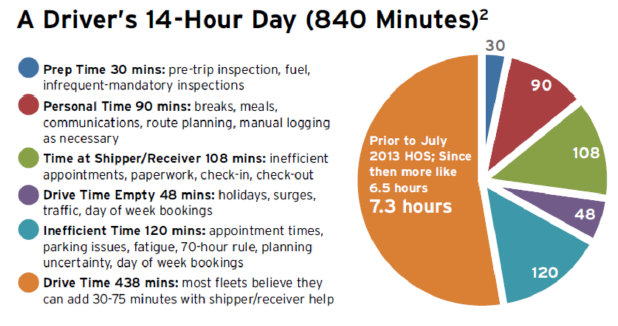Detention. Carriers and drivers alike despise it, and for good reason. The FMCSA estimated in a 2018 report that detention was costing the trucking industry up to $1.3 billion a year. A recent article in Material Handling & Logistics said new research shows the costs have only gotten worse since then.
The article quoted a study conducted by the American Transportation Research Institute, the independent research arm of American Trucking Associations.
“ATRI’s new detention research definitely helps us understand the full financial impact associated with detaining drivers,” says Edgar R. McGonigal, chief financial officer of Bestway Express. “From a safety and economic perspective, this research gives the trucking industry new insight into how both carriers and drivers should implement driver detention strategies.”
The average excessive detention fee per hour charged by fleets to shippers was $63.71, slightly less than the average per hour cost of $66.65 operating a truck in for-hire service that was found in another one of ATRI’s research publications, “Operational Costs of Trucking.”
The Effects of Detention
In the 2015 J.B. Hunt white paper “660 Minutes: How Improving Driver Efficiency Increases Capacity,” prior to hours of service (HOS) changes in July of 2013, “a good day” for a driver included 7.3 hours on the road on average out of a possible 11 hours of available drive time. After the HOS changes, “good” days shrunk to only 6.5 of a possible 14 hours on the road. That’s more potential drive time, yet less actual. Needless to say, there are significant hours being left on the loading deck.

Some in the industry feel that detention is like the old saying about the weather: “Everyone complains about it, but no one ever does anything about it.”
Fortunately, there are steps you can take to reduce the effects of detention on your bottom line. In the same J.B. Hunt paper, the company broke out four major efficiencies carriers should target:
- Flexible appointment times
- Expedited loading and unloading
- Onsite driver accommodations
- Drop and hook support
J.B. Hunt estimated that these changes combined could add more than 44,000 miles to a driver’s productivity per year.
Want to know more about how to reduce the effect of detention on your bottom line? Get our complimentary white paper, Detention Time Is Money.


